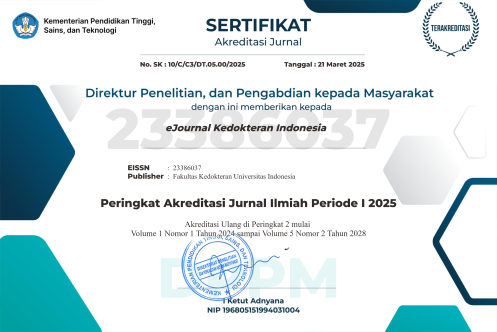Adipose-Derived Mesenchymal Stem Cells Extracellular Vesicles (ADMSCs-EVs) Implantation in Critical Size Bone Defect Model: Callus Formation Histology, BMP2, and Wnt Signaling
DOI:
https://doi.org/10.23886/ejki.12.803.114Keywords:
Exosomes, miRNA, BMP2, Wnt, Critical size bone defectAbstract
Critical bone defects pose a substantial healthcare burden globally. This study aimed to investigate the miRNA content ADMSCs-Evs (exosomes), which affected critical-sized bone histology, BMP2, and Wnt signalling pathways. Total RNA extraction and microarray analysis of miRNA were conducted. In-vivo experiments were performed on 16 critical-sized bone defect SD rats (eight for ADMSCs-EVs/exosomes and eight for NaCl) and four healthy control SD rats. The rats from each group were sacrificed on day 14 and day 28. Bone defect samples were collected for histology, protein, and molecular analysis. Histology analysis revealed increasing soft callus formation in the EVs ADMCs (exosomes) treated group on days 14 and 28 compared to the negative control group. Downregulation of miR-433-3p, miR-542-3p, and miR-328-3p in EVs ADMCSs (exosomes) enhances Wnt3A expression. Upregulation of miR-93-5p in ADMSCs-Evs (exosomes) inhibits BMP2 signalling, confirmed by BMP2 ELISA and higher chordin (BMP-2 antagonist) expression. Spp1 as a downstream gene of BMP-2 and Wnt signalling are indifferent. Specific miRNA inside ADMSCs-EVs (exosomes) regulates BMP-2 and Wnt signalling to enhance soft callus formation in critical size bone defect in EVs treated group than in negative control.
Downloads
Downloads
Published
How to Cite
Issue
Section
License
Copyright (c) 2024 Iqra Kousar, Ismail Hadisoebroto Dilogo, Radiana Dhewayani Antarianto, Jeanne Adiwinata Pawitan, Amer Mahmood, Rahyussalim

This work is licensed under a Creative Commons Attribution-NonCommercial 4.0 International License.
Accepted 2024-09-18
Published 2024-09-25



